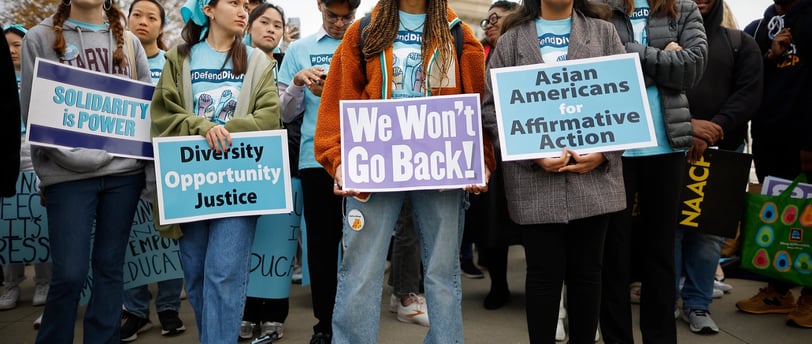Navigating the Supreme Court's Verdict on Affirmative Action: Impact on Workforce Diversity and Inclusion
In a recent landmark decision, the Supreme Court in Washington, Thursday, June 29, 2023, after the Supreme Court struck down affirmative action in college admissions, saying race cannot be a factor. Now sparking important discussions about workforce diversity and inclusion. This verdict holds far-reaching implications, not only for women, veterans, and minorities but also for the disabled who are exceptionally qualified and capable for various roles. In this blog post, we delve into the potential effects of this decision on creating a truly diverse and inclusive workforce. Join us as we explore the importance of equal opportunity and the significance of leveraging the talents of underrepresented groups in driving organizational success.


A significant recent development regarding, the Supreme Court has issued a ruling on affirmative action policies, bringing attention to the crucial topic of workforce diversity and inclusion. This decision holds implications not only for women, veterans, and minorities but also for individuals with disabilities. It highlights the importance of creating opportunities for these groups, all of whom possess exceptional qualifications, capabilities, and suitability for various roles. In this blog post, we delve into the potential consequences of the Supreme Court's verdict on fostering a diverse and inclusive workforce, celebrating the value that each individual brings to the table.
Empowering Individuals with Disabilities:
Workforce diversity extends beyond gender, race, and veteran status. It includes providing equal opportunities for individuals with disabilities. The Supreme Court's recent verdict emphasizes the significance of enabling these talented individuals to contribute their skills and perspectives to the workforce. By embracing disability as a dimension of diversity, organizations can tap into a pool of highly capable individuals, fostering innovation and creating a more inclusive workplace.
Enhancing Workplace Inclusion:
Diverse teams foster a culture of inclusion and belonging, resulting in improved productivity, engagement, and overall organizational success. By providing equal opportunities to women, veterans, minorities, and individuals with disabilities, organizations create environments that recognize and celebrate the unique qualities each person brings. This Supreme Court ruling reinforces the need for proactive measures to ensure that all individuals, regardless of their background, are given a fair chance to excel in their chosen careers.
Unleashing Untapped Potential:
By embracing workforce diversity, organizations unlock untapped potential and gain a competitive edge. Women, veterans, minorities, and individuals with disabilities possess a wealth of skills, talents, and experiences that enrich the workplace. The Supreme Court's decision serves as a reminder to tap into this vast talent pool, leveraging the strengths and perspectives of all individuals to drive innovation, problem-solving, and creativity within the organization.
Breaking Down Barriers:
Affirmative action policies play a crucial role in breaking down barriers and addressing systemic inequalities. By challenging stereotypes and biases, organizations can create an inclusive environment that values individuals based on their qualifications, abilities, and potential rather than predefined labels. The Supreme Court's verdict reinforces the importance of dismantling barriers and fostering a level playing field for everyone, creating opportunities for all individuals to thrive in their chosen fields.
Conclusion:
The Supreme Court's recent verdict on affirmative action reaffirms the significance of workforce diversity and inclusion. It highlights the need to provide equal opportunities for women, veterans, minorities, and individuals with disabilities, recognizing their exceptional qualifications and capabilities. By actively promoting diversity and inclusivity, organizations foster innovation, productivity, and a vibrant work culture that attracts top talent and drives sustainable success. Let us embrace this ruling as a catalyst for positive change, celebrating the strengths and contributions of all individuals and creating a future where diversity is valued and inclusion is the norm.


